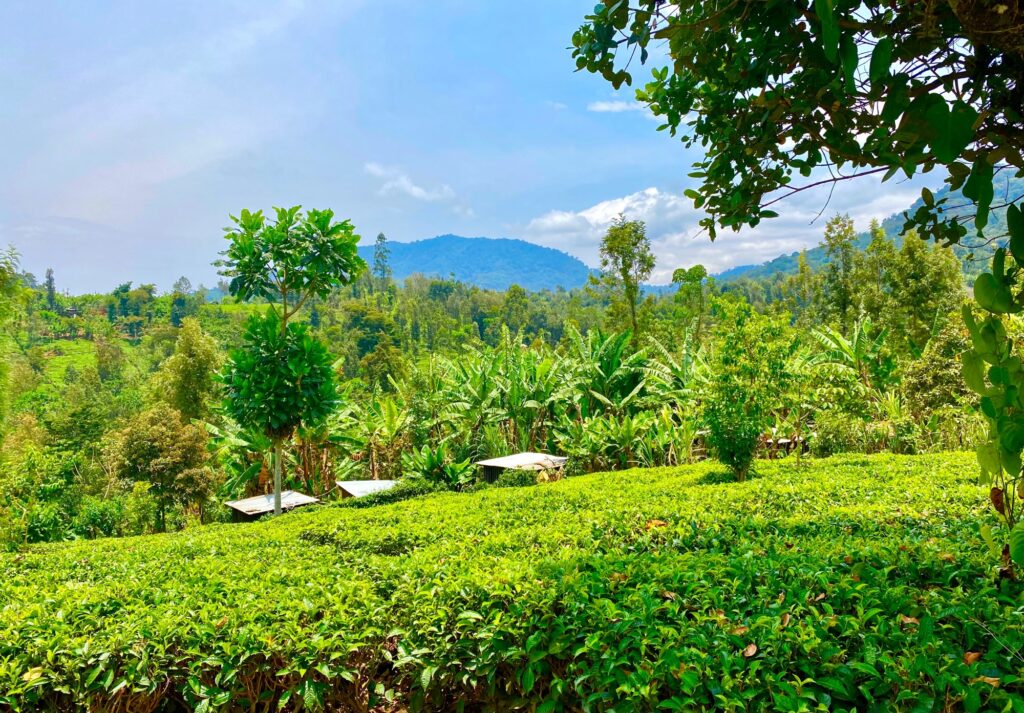
Kenya is renowned globally for its exceptional tea production, with its tea regions offering a diverse array of flavors and profiles that captivate tea enthusiasts worldwide. From the lush, verdant highlands to the rolling hills, Kenya’s tea-growing areas boast unique microclimates and soil compositions that contribute to the exceptional quality of the teas produced.
The History of Tea Cultivation in Kenya
The story of tea in Kenya dates back to the early 20th century when the first tea plants were introduced to the country by British settlers. Initially, the cultivation of tea was concentrated in the highlands of central Kenya, where the favorable climate and fertile soil provided the ideal conditions for tea production.
Over the decades, the Kenyan tea industry has evolved and expanded, with new tea-growing regions emerging and the country establishing itself as one of the world’s leading producers and exporters of high-quality tea. Today, tea is a vital component of Kenya’s agricultural economy, with millions of smallholder farmers and large-scale estates contributing to the country’s thriving tea industry.
The Unique Climate and Geography of Kenyan Tea Regions
The success of Kenyan tea can be attributed to the country’s diverse and favorable climate and geography. Kenya’s equatorial location, combined with its high-altitude tea-growing regions, creates a unique microclimate that is ideal for tea cultivation.
The tea regions in Kenya are characterized by:
- Elevation: The majority of Kenyan tea is grown at altitudes ranging from 1,500 to 2,700 meters (4,900 to 8,900 feet) above sea level, which provides the optimal temperature and rainfall for tea plants to thrive.
- Rainfall: The tea regions in Kenya receive consistent and abundant rainfall throughout the year, with an average annual precipitation of 1,000 to 2,000 millimeters (39 to 79 inches).
- Soil Composition: The volcanic soils found in the Kenyan tea regions are rich in nutrients and well-drained, providing an excellent growing medium for tea plants.
- Sunshine: The equatorial location of Kenya ensures that the tea regions receive ample sunshine, which is essential for the development of the tea plant’s leaves and the production of high-quality tea.
These unique environmental factors, combined with the dedicated efforts of Kenyan tea farmers, contribute to the exceptional quality and distinct flavors of Kenyan teas.
The Top Tea Regions in Kenya and Their Characteristics
Kenya’s tea-growing regions are renowned for their diverse terroirs, each producing teas with their own unique characteristics. Let’s explore the top tea regions in Kenya and the distinctive features that define their teas:
The Rift Valley Region
The Rift Valley region, which includes areas like Kericho, Bomet, and Nandi, is considered the heart of Kenya’s tea production. The tea grown in this region is known for its bright, brisk, and full-bodied flavor, with a distinct floral aroma.
The Central Highlands Region
The Central Highlands, encompassing regions like Muranga, Kiambu, and Nyeri, are home to some of the most prestigious tea estates in Kenya. The teas from this region are characterized by their delicate, aromatic, and balanced profiles, often with subtle notes of citrus and honey.
The Eastern Region
The Eastern region, including areas like Embu and Meru, produces teas with a more robust and assertive character. These teas are known for their deep, rich flavors, with hints of malt and a lingering aftertaste.
The Coastal Region
The Coastal region, which includes Kwale and Kilifi, is a relatively newer tea-growing area in Kenya. The teas from this region are known for their unique, slightly sweet and earthy notes, often with a subtle briskness.
Each of these tea regions in Kenya offers a distinct tea-drinking experience, catering to a wide range of preferences and palates.
The Famous Tea Estates in Each Region
Within these renowned tea regions, Kenya boasts a number of prestigious tea estates that have gained international recognition for their exceptional teas. Some of the most famous tea estates in Kenya include:
- Kericho Region: Finlays, Unilever, and James Finlay
- Central Highlands Region: Tinderet, Gichathaini, and Makomboki
- Eastern Region: Kangaita, Rukuriri, and Kiegoi
- Coastal Region: Mariakani, Mwatate, and Kasigau
These estates, with their meticulous cultivation practices, innovative processing methods, and strict quality control, have played a pivotal role in establishing Kenya’s reputation as a global leader in tea production.
The Process of Tea Cultivation and Harvesting in Kenyan Tea Regions
The process of tea cultivation and harvesting in Kenya is a meticulously orchestrated dance between nature and human expertise. The journey begins with the selection of the finest tea cultivars, which are carefully planted and nurtured in the lush, verdant tea gardens.
As the tea plants mature, the skilled tea pluckers embark on a regular harvesting schedule, carefully hand-picking the tender, young tea leaves. This labor-intensive process ensures that only the most flavorful and aromatic leaves are selected, laying the foundation for the exceptional quality of Kenyan teas.
The harvested leaves are then transported to state-of-the-art tea processing facilities, where they undergo a series of steps, including withering, rolling, oxidation, and drying. These processes are fine-tuned to bring out the unique characteristics and profiles of the teas from each region.
Throughout this journey, the Kenyan tea industry maintains a steadfast commitment to sustainability, implementing eco-friendly practices and supporting the local communities that are integral to the success of the tea industry.
The Flavors and Profiles of Teas from Different Kenyan Tea Regions
The diverse tea regions of Kenya offer a remarkable range of flavors and profiles, catering to the diverse preferences of tea enthusiasts worldwide. Let’s explore the distinct characteristics of teas from the different Kenyan tea regions:
- Rift Valley Region Teas: These teas are known for their bright, brisk, and full-bodied flavor, with a distinct floral aroma. They often exhibit notes of citrus, honey, and a refreshing, lingering finish.
- Central Highlands Region Teas: Teas from this region are characterized by their delicate, aromatic, and balanced profiles. They typically showcase subtle notes of citrus, honey, and a delicate, refined character.
- Eastern Region Teas: Teas from the Eastern region are renowned for their robust and assertive character, with deep, rich flavors that often include hints of malt and a lingering aftertaste.
- Coastal Region Teas: The teas from the Coastal region are unique, with a slightly sweet and earthy profile, often accompanied by a subtle briskness and a refreshing, clean finish.
These diverse flavor profiles allow Kenyan tea enthusiasts to explore a wide range of tasting experiences, each offering its own distinct and captivating charm.
The Health Benefits of Kenyan Tea
Kenyan tea is not only renowned for its exceptional flavor but also for its impressive health benefits. The tea leaves grown in the pristine Kenyan tea regions are rich in antioxidants, vitamins, and minerals that contribute to overall well-being.
Studies have shown that Kenyan tea can:
- Boost Immune System: The high concentration of antioxidants in Kenyan tea helps strengthen the body’s natural defenses against illness and infection.
- Improve Heart Health: The polyphenols found in Kenyan tea have been linked to reduced cholesterol levels and a lower risk of cardiovascular disease.
- Aid in Weight Management: Kenyan tea contains compounds that can help increase metabolism and promote fat burning, making it a beneficial addition to a healthy lifestyle.
- Enhance Mental Focus: The natural caffeine content in Kenyan tea can provide a gentle energy boost, improving cognitive function and mental alertness.
Incorporating Kenyan tea into one’s daily routine can be a delicious and nutritious way to support overall health and well-being.
The Role of the Tea Industry in the Kenyan Economy
The tea industry plays a pivotal role in the Kenyan economy, contributing significantly to the country’s GDP and employment. Kenya is the world’s third-largest producer of tea, and the industry directly employs over 5 million Kenyans, many of whom are smallholder farmers.
The tea industry in Kenya generates substantial foreign exchange earnings, with tea being one of the country’s top exports. The revenue generated from the sale of Kenyan tea supports various social and economic development initiatives, including education, healthcare, and infrastructure improvements.
Moreover, the tea industry in Kenya has fostered a thriving ecosystem of related businesses, such as tea processing facilities, transportation services, and packaging companies. This interconnected network has created numerous job opportunities and contributed to the overall economic growth of the country.
As the global demand for high-quality tea continues to rise, the Kenyan tea industry remains poised to play an increasingly vital role in the nation’s economic prosperity and development.
Exploring and Experiencing the Finest Kenyan Teas
In the captivating world of tea, Kenya stands as a true gem, offering a diverse array of exceptional teas that captivate the senses and delight the palate. From the bright, brisk teas of the Rift Valley to the delicate, aromatic offerings of the Central Highlands, each Kenyan tea region presents a unique and enchanting tea-drinking experience.






